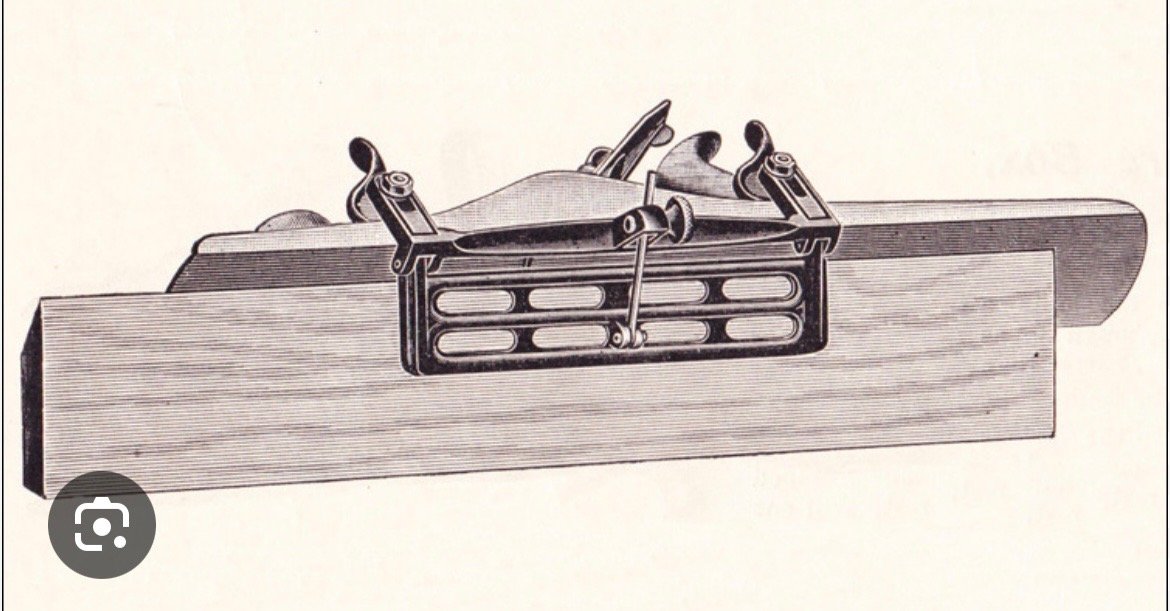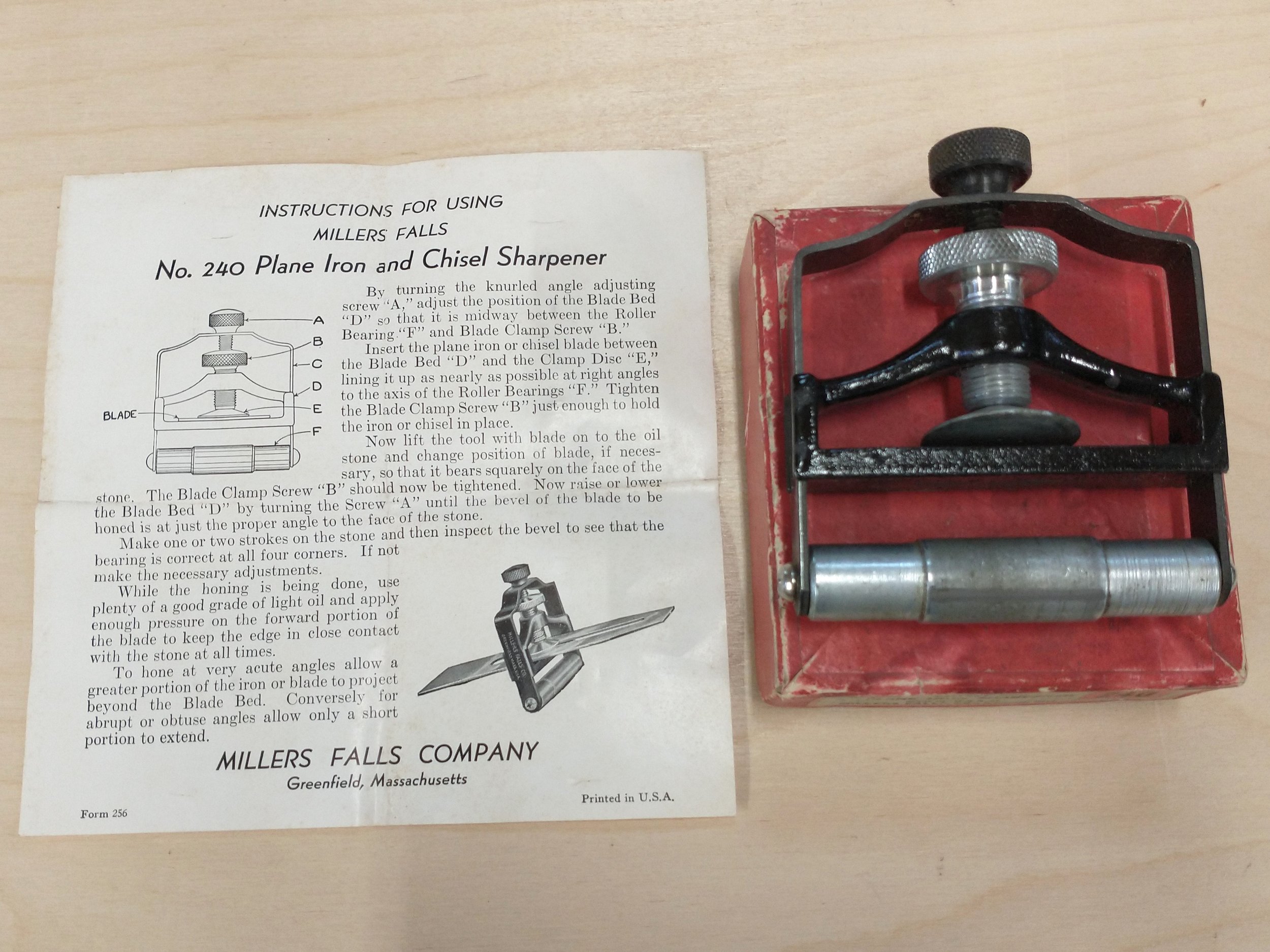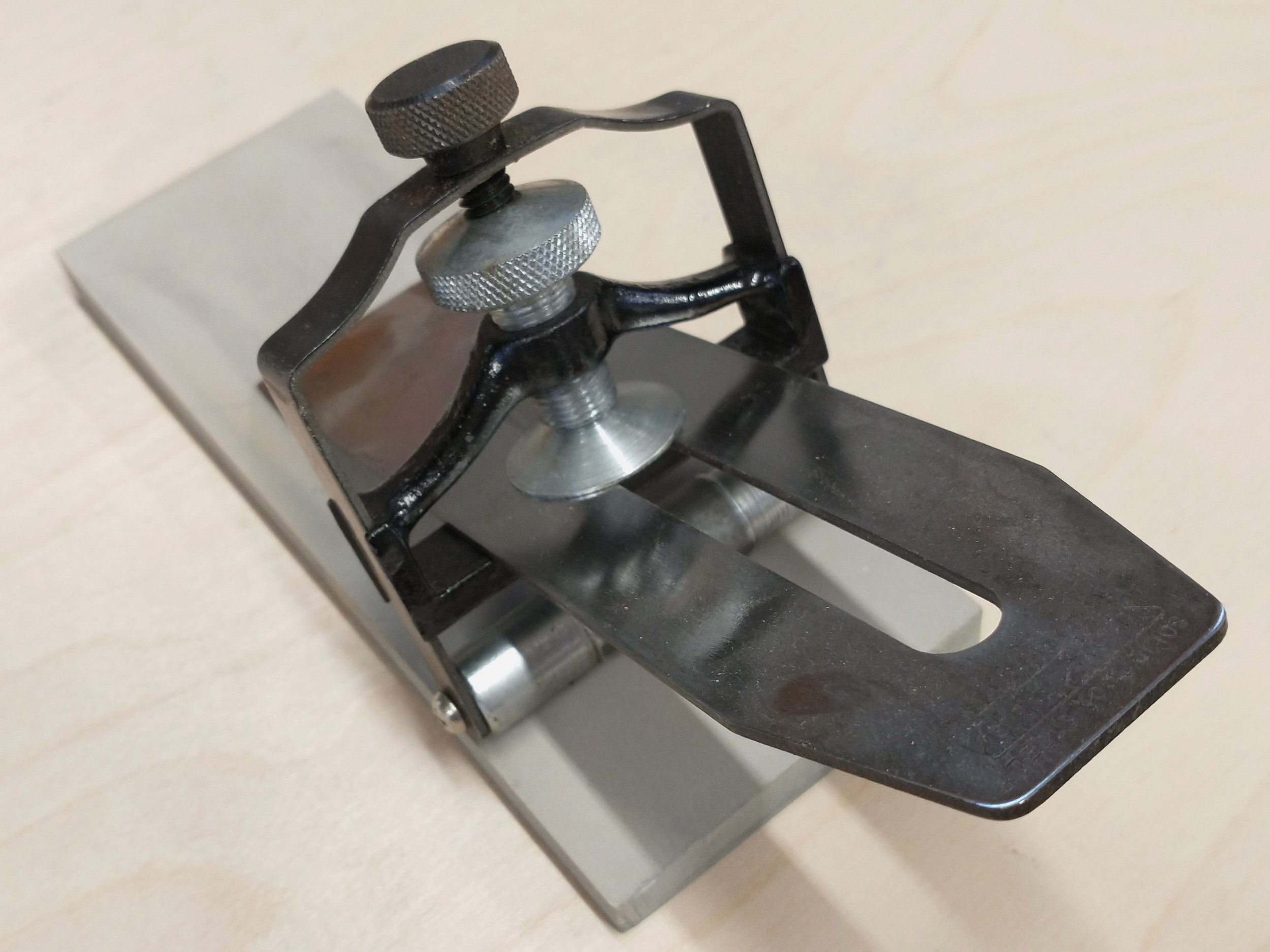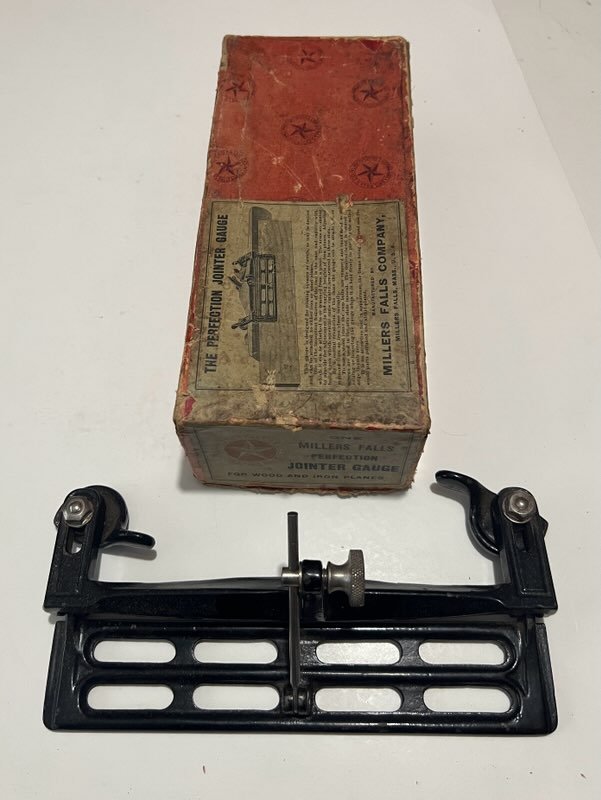
Hand Plane Accessories
An accessory is something that adds convenience and consistency to something. Millers Falls provided accessories to help sharpen an iron and shave a joint with consistency.
The Chisel Grinder
The 1887 catalog introduced a tool to sharpen either a chisel or an iron on a grinding wheel or a flat stone. The adjustable angle of the grind is controlled with a threaded rod connected to the plate holding the iron and a knurled nut above the roller wheel. A tension spring holds the adjustment throughout the grinding process. When the chisel grinder is used on a grinding wheel, the roller allows the device to be placed on the spinning wheel. To use this with a honing flat stone, the roller is placed behind the stone.
The 1929 No. 40 catalog no longer lists the chisel grinder.

From 1887 until 1914, the chisel grinder did not have a model number. The 1915 catalog shows the chisel grinder with the model number 569.

A full view of three different versions.

The company name and location, but no model number.

No stamps on this version.

The chisel grinder can be set up for sharpening on a flat stone.
No. 240 Iron Sharpener
The No. 240 iron sharpener was introduced in the 1952 No. 49 catalog. This sharpening jig has a clamping nut and a second adjusting nut used to fine tune the angle after the iron is clamped in the jig. The 1969 catalog has the No. 240 available. By the 1973 price list, the No. 240 was no longer produced.

The silver nut will clamp the iron into the jig. The top darker nut moves the clamped assembly up or down which fine tunes the sharpening angle.

This type of sharpening jig is still being sold today. The companies selling this style do not have the fine tuning adjustment, but this style of jig will live on as long as irons need to be sharpened.

When the top nut is turned, the clamping assembly slides up or down on the outside frame.
Jointer Gauge
Levi A. Alexander invented a wooden plane adjustable jointer gauge for the Langdon Miter Box Co. and was granted a patent on July 16, 1872. The Millers Falls Co. would function as a sales agent and listed the Alexander jointer gauge in their catalog. Referencing the Millers Falls 1887 catalog, you see that the jointer gauge does not have a model number only the Alexander name. With metal planes becoming more popular, Landon produced a version of the jointer gauge in 1904 what would easily clamp onto the cheeks of a metal plane but could still be used on a wooden body plane using wood screws. This new jointer gauge was referred to as “The Perfection Jointer Gauge” .
In 1906, Millers Falls acquired control of the Langdon operation. Millers Falls continued selling the jointer gauge under the Perfection name until 1915 when the catalog lists the jointer gauge as the No. 88. The only change to the No. 88 is seen in the 1925 No. 39 catalog with the addition of a knob added to the jointer gauge. The knob can be placed at either end depending on which side of the plane the jointer gauge is secured. The No. 88 would continue until 1944 when cutbacks ended the jointer gauge production.

The Langdon Miter Box Co. "The Perfection Jointer Gauge"

Millers Falls "The Perfection Jointer Gauge" before the model number was assigned.

The 1925 No. 39 catalog shows the knob on the jointer gauge. The knob can be screwed at either end depending on how the gauge is mounted.

The No. 88 on the top and the No. 66 on the bottom.

The No. 66 is a larger version of the No. 88.

The No. 88 easily clamps on the cheeks. A knob on the No. 88 helps control the movement against the wood.

Millers Falls 1894 catalog.

